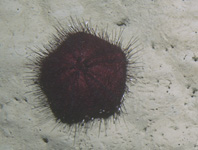Abstract
Recently, specimens of Cephalobus topali, collected from an agricultural area from northern Vietnam, are described, including SEM study. They are characterized by their its 306–347 µm long body in females, lateral field with two alae or 3-4 longitudinal incisures, lip region with three pairs of asymmetrical conoid lips, three low and rounded labial probolae separate from the corresponding pair of lips by an incisure, U-shaped primary axils without guard processes, V-shaped secondary axils without guard processes, pharyngeal corpus slightly fusiform and 2.6–3.1 times the isthmus length, spermatheca and postvulval sac poorly developed, female tail conoid (18–24 µm, c = 12.7–17.0, c’ = 1.8–2.7) with rounded terminus ending in an acute or wart-shaped mucro, phasmid at 29–34% of tail length, and male unknown. SEM pictures reveal that lip region pattern significantly differs from that found in members of Cephalobus and fits that observed in Acrobeloides, so that the species is transferred to this genus. Cephalobus quadrilineatus is provisionally maintained as different from C. topali.
References
Abolafia, J. (2015) A low-cost technique to manufacture a container to process meiofauna for scanning electron microscopy. Microscopy Research and Technique, 78, 771–776.
http://dx.doi.org/10.1002/jemt.22538Abolafia, J. & Peña-Santiago, R. (2003) Nematodes of the order Rhabditida from Andalucía Oriental, Spain. The genus Acrobeloides (Cobb, 1924) Thorne, 1937, with description of A. arenicola sp. n. and a key to species. Journal of Nematode Morphology and Systematics, 5 (2002), 107–130.
Abolafia, J. & Peña-Santiago, R. (2006) Nematodes of the order Rhabditida from Andalucía, Spain. The family Panagrolaimidae, with a compendium of species of Panagrolaimus and a key to their identification. Journal of Nematode Morphology and Systematics, 8, 133–159.
Abolafia, J. & Peña-Santiago, R. (2009) Nematodes of the order Rhabditida from Andalucía Oriental, Spain. The genus Cephalobus Bastian, 1865 with description of C. harpagonis sp. n. and key to species. Nematology, 11, 485–508.
http://dx.doi.org/10.1163/138855409X12465362560359Andrássy, I. (1968) Fauna Paraguayensis. 2. Nematoden aus den Galeriewäldern des Acaray-Flusses. Opuscula Zoologica Budapest, 8, 167–312.
Andrássy, I. (1970) Freilebende Nematoden aus Vietnam. Opuscula Zoologica Budapestinensis, 10, 5–31.
Andrássy, I. (1984) Klasse Nematoda (Ordnungen Monhysterida, Desmoscolecida, Araeolaimida, Chromadorida, Rhabditida). Bestimmungsbücher zur Bodenfauna Europas. No. 9. Berlin, Deutschland, Akademie Verlag, 509 pp.
Andrássy, I. (2005) Free-living nematodes of Hungary (Nematoda errantia). Vol. 1. In: Csuzdi, C. & Mahunka, S. (Eds.), Pedozoologica Hungarica. No. 3. Hungarian Natural History Museum, Budapest, pp. 1–518.
Baermann, G. (1917) Eine einfache Methode zur Auffindung von Ankylostomum (Nematoden) Larven in Erdproben. Geneeskunding Tijdschrift voor Nederlandsch-Indië, 57, 131–137.
Bastian, H.C. (1865) Monograph on the Anguillulidae, or free nematoids, marine, land, and freshwater; with descriptions of 100 new species. Transactions of the Linnean Society of London - Zoology, 25, 73–184.
http://dx.doi.org/10.1111/j.1096-3642.1865.tb00179.xChitwood, B.G. (1933) A revised classification of the Nematoda. Journal of Parasitology, 20, 1–131.
Cobb, N.A. (1924) Amended characterization of the nemic genera Cephalobus and Acrobeles. Journal of Parasitology, 11, 108.
De Grisse, A. (1969) Redescription ou modifications de quelques techniques utililisées dans l’etude des nematodes phytoparasitaires. Mededelingen van de Rijksfaculteit Landbouwwetenschappen Gent, 34, 351–369.
De Ley, P., van de Velde, M.C., Mounport, D., Baujard, P. & Coomans, A. (1995) Ultrastructure of the stoma in Cephalobidae, Panagrolaimidae and Rhabditidae, with a proposal for a revised stoma terminology in Rhabditida (Nematoda). Nematologica, 41, 153–182.
http://dx.doi.org/10.1163/003925995X00143Eroshenko, A.S. (1968) [Cephalobus quadrilineatus n. sp. – new species of nematode of the genus Cephalobus Bastian, 1865 (Nematoda: Cephalobidae)] in Russian. Soobshchenija Dalnevostotjnogo Filiala Akademii Nauk SSSR, 26, 55–57.
Flegg, J.J.M. (1967) Extraction of Xiphinema and Longidorus species from soil by a modification of Cobb's decanting and sieving technique. Annals of Applied Biology, 60, 429–437.
http://dx.doi.org/10.1111/j.1744-7348.1967.tb04497.xThorne, G. (1937) A revision of the nematode family Cephalobidae Chitwood and Chitwood, 1934. Proceedings of the helminthological Society of Washington, 4, 1–16.

